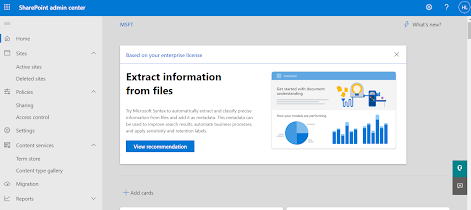The new challenge - Azure Well-Architected Framework
Microsoft introducing Azure Well-Architected Framework - A set of guiding principles that you can use to improve the quality of a workload. This framework consists of below five pillars of architectural excellence:
Reliability | Security | Cost optimization | Operational excellence | Performance efficiency
Six supporting elements surrounding the Well-Architected Framework. This make sense, how these pillar work and how they can bring the value to our IT Work Execution Lifestyle. Great!
Reliability - Platform Reliability and Application Reliability
A reliable workload is both resilient and available. Resiliency is the ability of the system to recover from failures and continue to function.
The goal of resiliency is to return the application to a fully functioning state after a failure occurs. Availability is whether your users can access your workload when they need to.
How do we make our IT environment hosted in Cloud more reliable and safe from all disasters? Then we need to know what are the disaster we might face in Cloud.
|
Problem |
Solution |
|
Isolated VM Failure |
Premium Storage |
|
Hardware Failure |
Availability Sets |
|
Datacenter Failure |
Availability Zones |
|
Region Failure |
Azure Site Recovery/Region Pairs |
Security
To protect against various threats, such as network intrusion and DDoS attacks. We still need to build security into our application development, deployment, and maintenance process inside Cloud.
Cost optimization
Implement the principles of Build-Measure-Learn to fast-track the time. How to proceed with optimization approach.
Following questions can help here to know the area as well as how and what to optimize:
- Where you are spending?
- What you are spending for?
- Who are spending?
Optimization techniques can be applied from very beginning like design phase. For example, implementing the best practice will minimize the chances of building an unstable product.
Provisioning is the next state where you are going to build your building blocks. Obviously you need to ensure what services and what level of services you are going to deploy here.
Monitoring phase, you can think about what monitoring service really required or needful. Good to avoid implementing additional monitoring services against cost and let them keep on the on-demand shelf - if require in near future, then to implement.
Finally the optimization phase and this phase arrives when your product/services/website is in production and stable. You have plenty of rooms here to perform your optimization techniques.
Following are high impact techniques as your optimization techniques. Good to reduce your budget but not against the cost of performance or reliability of your application.
Operational excellence covers the operations and processes that keep an application running in production. While talking of operational, the first think that came into my mind is DevOps.
Azure DevOps provides a platform where you can secure your application. How? - You can actually perform penetration test and security test for around two weeks, just to make sure your application deployment, hosting, and running following the excellence process. By the way, you can perform
dependency management scanning in CICD pipeline :)
Following are areas and phases where you can tighten your security and implement DevOps Security model.
We'll talk more about this in next upcoming posts!







Comments
Post a Comment